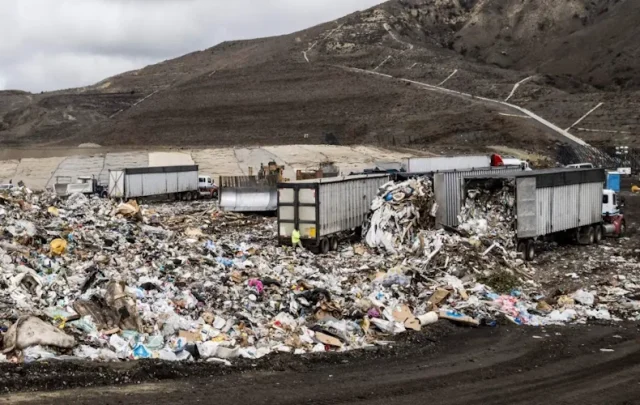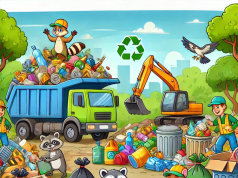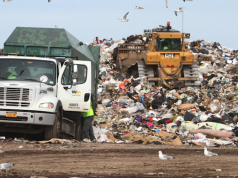Hauling garbage to landfills is a vital part of the infrastructure of waste disposal in California.
California produces millions of tons of waste every year as it is one of the US’s most populous and economically active states. Safe and environmentally sound transport of this waste is critical to protecting public health and achieving state environmental objectives.
Waste Collection And Transportation Procedure
Waste collection is the first step in the process that ends with waste in landfills.
Local waste management services usually collect waste from homes, businesses, and industries. Entities such as public agencies and private enterprises that operate a fleet of trucks specially designed for the collection of various wastes (municipal solid waste (MSW), construction and demolition debris, hazardous waste, etc.).
After such waste is collected, it is then taken to transfer stations—intermediate facilities where it is compressed and consolidated to maximize the efficiency of transportation. Compacted waste occupies less space and needs to make fewer trips to landfills which helps decrease the frequency and cost of trips to local landfills, which are far more expensive.
Waste is loaded on to larger trucks, including long-haul semi-trailers, to be taken to landfills from transfer stations. For long-distance transport, rail or barge systems are also used. Trucking is still the most common mode of transportation, though, since it is flexible and has a wide range of roads.
How Does Transportation of Waste Impact Businesses
The geographic and demographic challenges associated with transporting waste are not unique to California.
Pallets in cities like Los Angeles and Modesto produce large amounts of waste and are shipping sensitive so well-organized logistics are essential to avoid cluttering the roads and delaying delivery. In contrast, rural dwellers are further from the nearest landfill or waste facility.
The other challenge lies in the ecological blow, as moving waste up and down the chain.
Heavy-duty dumpster trucks, which represent the dominant vehicles in this segment, contribute to GHG emissions and air pollution. California has promulgated regulations designed to help alleviate these impacts, such as mandates for cleaner-burning fuels, incentives for electric or hybrid cars, and policies to encourage more sustainable practices.
Regulatory Framework
In California, a patchwork of federal, state and local laws controls the transport of waste.
The California Department of Resources Recycling and Recovery (CalRecycle) governs much of waste management, including transportation standards. Regulations also ensure that waste comes on the road, safely corresponding avoiding spills, contamination and health hazards.
Hazardous waste is also subject to strict regulations under the federal Resource Conservation and Recovery Act, known as RCRA, and California’s own Hazardous Waste Control Law. These regulations require specialized vehicles for transport as well as trained personnel to handle hazardous materials.
Sustainability Initiatives and Innovations in Waste Management
California has long been a leader in exploring responsible solutions to mitigate the environmental impact of waste transportation. For instance, some cities and companies are testing electric garbage trucks and biodiesel-fueled vehicles to reduce emissions.
In addition, the state is also working to boost its rail and other multiclass transport modes to lessen dependence on road-hauling.
The state is likewise focused on source reduction, including recycling and composting and waste diversion programs. California is reducing the overall volume of waste that needs to be transported, which reduces the burden on the system and its environmental footprint, by diverting materials from landfills.
Waste transport to California landfills is a complicated yet necessary process that requires significant collaboration among public and private players. The state is confronted with many challenges, including geographic and environmental, but is striving to innovate and move toward environmentally sustainable practices. California with its continuous investment in clean transportation technologies and waste reduction strategies is providing an example of responsible waste management that can be followed worldwide.




